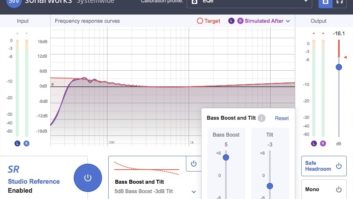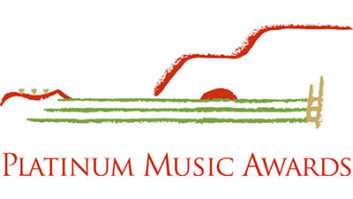Few could have predicted that Disturbed’s debut album, The Sickness, would turn the Chicago band into a multi-Platinum international success. But by the time they put final touches on the project, they knew it was special.
“In a weird sort of way, we weren’t surprised,” says producer Johnny K. “I thought it was so good when it was done. We were definitely naive about the odds of that kind of success, but we all had a sense that it would do something.”
The Sickness elevated vocalist David Draiman, guitarist Dan Donegan, bassist Fuzz and drummer Mike Wengren to top contenders in the heavy-metal field. But while their peers sold themselves on attitude and lewdness, Disturbed concentrated on musicianship and making their message clear: fight racism, practice tolerance, wear your individuality with pride. The points were obviously well-taken, as the band developed a fiercely loyal following.
Loyalty ranks high among Disturbed’s priorities: They wouldn’t back down in their decision to have The Sickness produced by Johnny K, who was at the time relatively unknown and whose relationship with the group dated back to Donegan’s club-band days. “That was my first album for a major label,” he says. “[Reprise] had given them a sizable deal, and the band said, ‘We want this guy with no track record as a major-label producer.’ The label was nervous, but the band was insistent. It speaks of them as people, and their determination and work ethic define their career. They stood by me.”
To record their latest album, the chart-topping Believe, Disturbed reassembled the team. They went back to Johnny K’s Groovemaster Studios in Chicago, and again had Andy Wallace mix at Soundtrack Studios in New York. By this time, the group had logged thousands of miles and countless performances. According to both Wallace and Johnny K, however, Disturbed were 100% professional and focused before they ever sold a single CD. Success hasn’t changed their work ethic.
“They have the same down-to-earth attitude,” says Wallace. “They’re very intelligent and not on any crazy ego trips. When we did the first record, they were pleased to have me mix it, and were very respectful about my input and very appreciative of my welcoming theirs. They’re not hard to get along with; they’re dependable and punctual. No star trip had developed on the second album.
“They’re almost at ease about the fact that they had success, so my experience working with them this time was not greatly different operationally. They just have more confidence in themselves and in me, and were even more trusting in what I did. On both records, they listened to the mixes and made suggestions.”
Fans expecting The Sickness Part II were in for a surprise with Believe. Draiman’s brutal vocals have taken a dynamic turn. The band still attacks fiercely, but rage has yielded to strength and lyrical anger to introspection.
“I knew things had to be together to follow up the first record,” says Johnny K. “Lyrically, David wanted to offer something with more substance, which he did brilliantly. I know how thoughtful and hard-working they are, so I expected greatness. If it wasn’t great, as a producer I was ready to send them back to the drawing board, which was absolutely unnecessary.
“Their confidence was a big thing. Their ability and performance as musicians dramatically improved after 500 to 600 shows. They were machines; it was instantly apparent. Mike was hitting the drums with confidence. It made getting the drum tracks a breeze, which gave me the ability to spend time on sound. I like to think that this record is clearer and more separated because they were playing better, and it gave us more time to work on sound.
“Recording took six weeks. The arrangements were so well-done on their own that there wasn’t a lot I could add. We tracked in three weeks, edited and fine-tuned overdubs. They were excited because they were recording new songs; there was energy and a challenging of themselves to keep up with their enthusiasm.
“The first record was done on tape; this one was digital. I felt that the heart of the music is more traditional metal, and a change in format would give it a modern edge. On the first album, the sequencers added a modern element and gave the songs their thickness and warmth. I used analog 2-inch on the first record. This time, we tracked to Pro Tools, but we used it as a digital recorder more than a workstation. We [used] digital Apogee converters, the AD8000. My studio has a Euphonix CS3000 and a 104-fader configuration; it was mainly intended to be a mixing desk, although we used it for a monitoring desk with mostly outboard mic pre’s — a smorgasbord of outboard mic pre’s, various vintage Neve mic pre’s. The record was tracked through a Neve Melbourne [a sidecar board] and [Neve] 1095s and monitored through the Euphonix.
“I usually record live,” Johnny K continues. “The studio has an iso room for everything — drums, amps; everything is isolated in separate rooms. The band is in the control room with me, the drums are in the main room, and we crank out the songs. All of the main rhythm tracks were done in a week. Setup for the album — the sound of the record — was achieved in about six hours on the first day of setup. We didn’t do a lot of recutting. I like to get the energy, so I try not to run gazillions of takes. I’d rather move on. Once we get good live drum takes, it lays the foundation for everyone else and carries through the tracks.
“Most of the effects and overdubs on this record are guitar-based. We used an Eventide Harmonizer, ran the guitar through and got a great effect that sounded like drums playing under the chorus in ‘Liberate.’ That’s something we just stumbled across; it’s a subtlety in the mix.
“We changed mic pre and compression settings to bring out the depth of David’s vocals. We overdrove the compressor. We used a Distressor on the vocals occasionally when we tracked, but it was not always engaged. The vocal mic pre was an Avalon 737, and I used a Neumann tube as a vocal mic.”
Andy Wallace says this of the tapes that came to him for mixing: “Johnny’s stuff came in fine. He’s a very meticulous guy, and he engineered and produced his stuff, as I had done in my life, as well. He’s a good engineer. I like his style and the way he records live instruments.
“Mixing probably took three weeks. We moved along at a song a day. I like to mix on an SSL console. This one was done on a G-Plus mixing console in Soundtrack Studio G, a room I use quite a lot, and one of the other consoles I use quite a bit. Monitoring was on a Yamaha NS-10 and Genelec 1031A. That’s generally the same monitor setup I use most of the time.
“I mixed from Pro Tools, their 24-bit HD system. I recorded the stereo mix on several media, the main one being Studer half-inch 2-track A80 analog at 30 ips, No Noise reduction; it was mastered from that medium, I think. Other media I go to are the Sony Digital DA-78 recorder; sometimes mastering engineers master from that. I back up on a Panasonic 3800 DAT for safety. I don’t use a lot of outboard gear. I use a variety of reverb, mostly Lexicon, and stick mostly to compression on the console. Occasionally, I used external compression. Delay lines and reverb are my outboard gear.”
Both Johnny K and Wallace agree that Disturbed’s precision made everyone’s job much easier. “More significantly,” says Wallace, “it makes the record better because they really know the audience they’re aiming at and the kind of music they want to make. In the market they’re dealing with, you have to keep your sights very straight and clear, and they have. I give them a lot of credit for that. The cutout bins are full of nice records with no focus, no definition and, ultimately, no audience. These guys want to play live to large audiences, and they’ve contoured their records to address that audience. It makes for better records and a professional presentation of what the band is about.”



